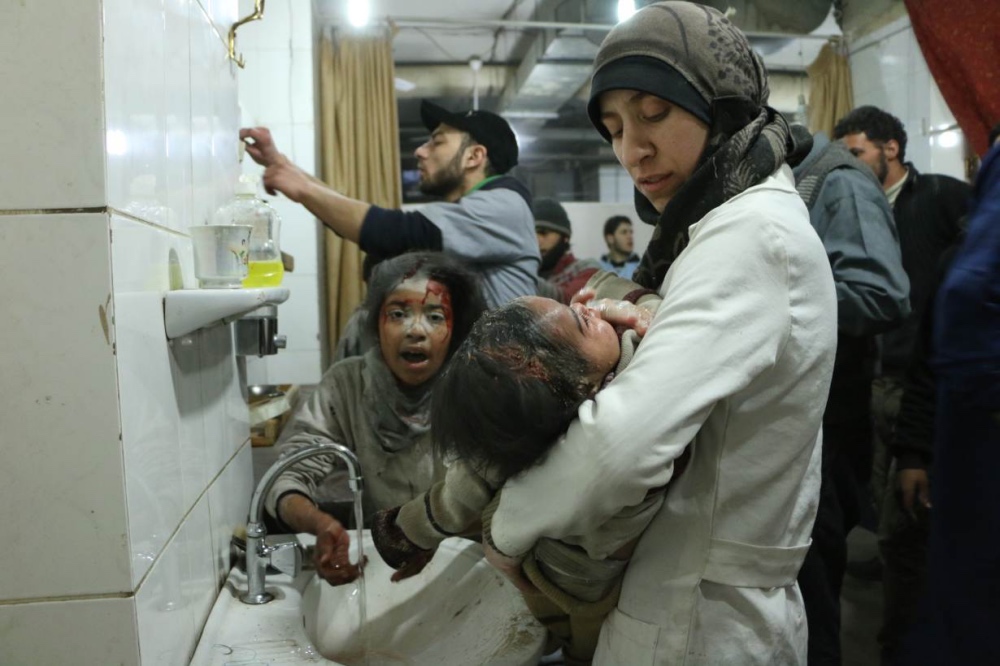London, UK
Thomson Reuters Foundation
During the five-year siege of Syria’s eastern Ghouta region, doctor Amani Ballour worked in a fortified underground hospital called The Cave where she and her team defied constant bombardments to save thousands of lives.
Her story has now been made into a film, which Syrian director Feras Fayyad hopes will help change attitudes towards women in the patriarchal society.

Dr Amani Ballour, who managed an underground hospital during the siege of eastern Ghouta in Syria, treats a patient in a scene from the film ‘The Cave’ by Syrian director Feras Fayyad. The film goes on release in Britain on Friday, 6th December. PICTURE: National Geographic via Thomson Reuters Foundation
The Cave, to be screened in Britain from Friday, follows Ballour as she deals with everything from babies choking on building debris following Russian warplane strikes to the terrifying aftermath of a chemical weapons attack.
The team battle with rudimentary equipment, power cuts and dwindling medical supplies while tending to a stream of patients, including many traumatised and malnourished children.
But Ballour, who became the hospital’s manager in 2016, and other female staff also have to confront discrimination.
At one point a patient’s husband demands to talk to a male manager “who can do a better job”, telling Ballour that women should stay at home.
“No one can tell me what to do, or where to work,” replies Ballour, a specialist in paediatrics.
Fayyad, who won an Oscar nomination for his 2017 film Last Men in Aleppo, praised Ballour for challenging stereotypes in a society where girls often marry as teenagers.
The doctor, whose sister wed at 13, encourages the young girls she treats to dream big and do “important” work when they grow up.
Fayyad said the bunker hospitals gave women medical workers a place where they could claim a freedom and authority often denied them above ground.
The director, who was arrested and tortured following the 2011 uprising against Syrian President Bashar al-Assad, said he believed women’s roles were changing.
“I have seen while filming in Syria how women’s voices are growing, and I wanted to reflect that,” he told the Thomson Reuters Foundation.
Fayyad’s team recorded about 1,000 hours of footage in The Cave and six other hospitals. Much of it was so harrowing that a therapist was brought in to counsel the post-production team.
The director said he was ready to share the footage with anyone pursuing justice for victims of the war.
UN investigators have accused Syrian forces and their allies of committing war crimes in eastern Ghouta through bombardments and deliberate starvation.
Damascus denies ever having used chemical weapons during the Syrian war, now in its ninth year, but UN experts say there is evidence of multiple attacks.
The Cave closed after the Syrian army recaptured eastern Ghouta in April, 2018.
Now a refugee in Turkey, Ballour said in a statement that she hoped The Cave would show Syrian women that they were strong.
“I tried to say to all the women that I saw…’Just believe in yourself’. One day, things will change. Society will change,” she said.





